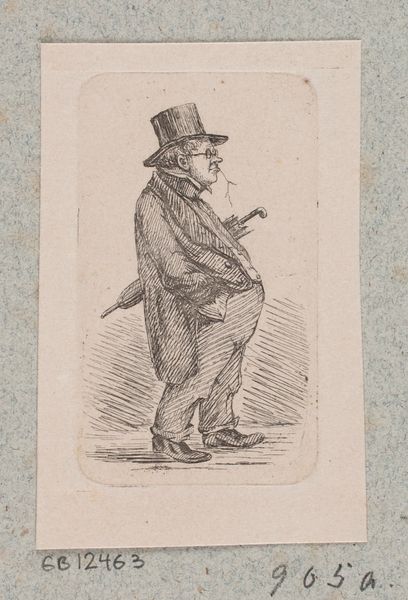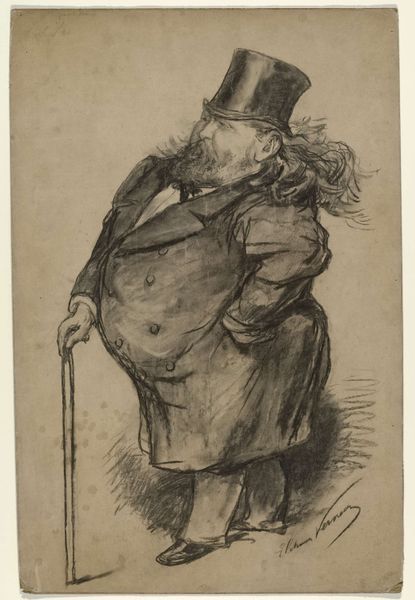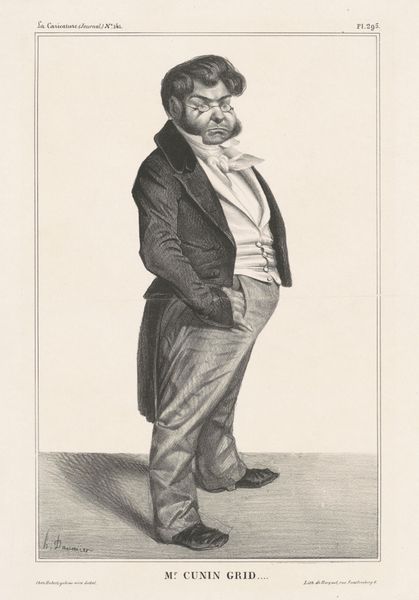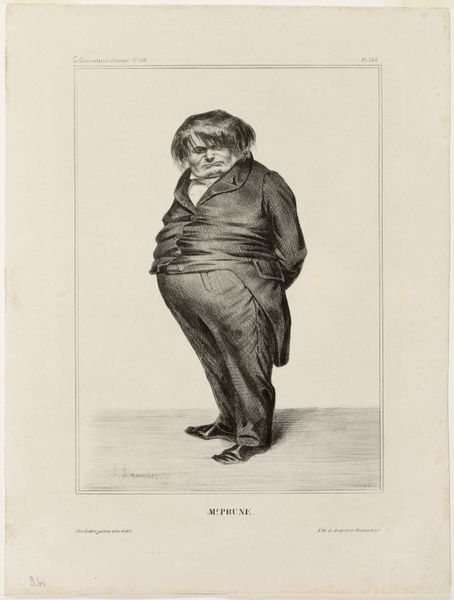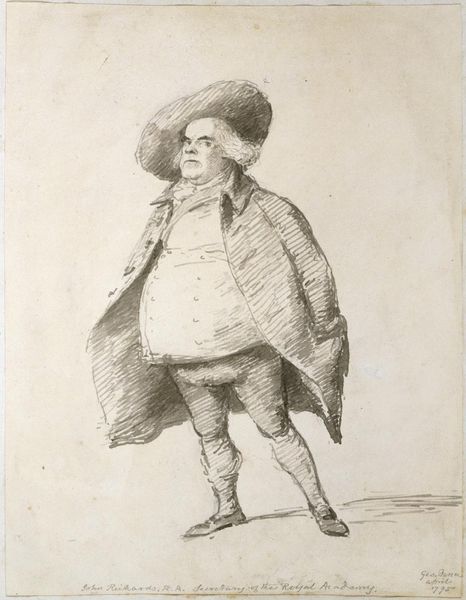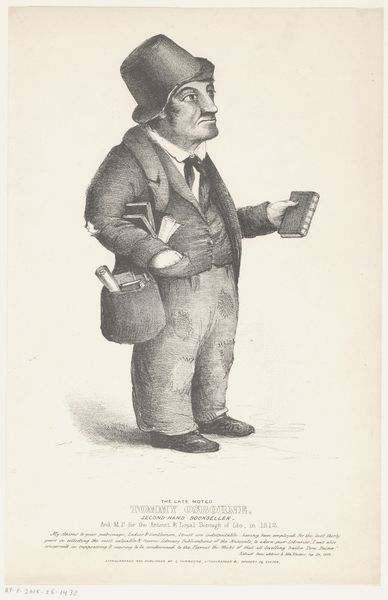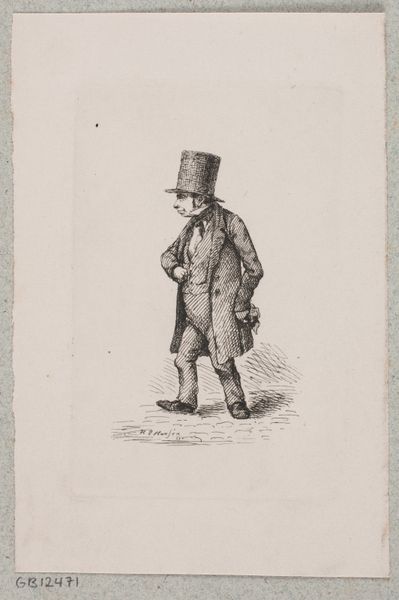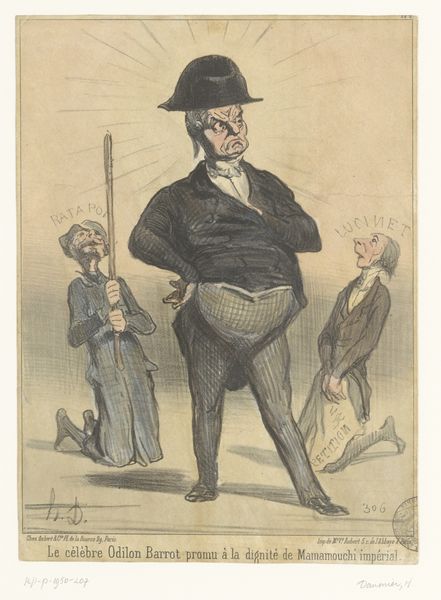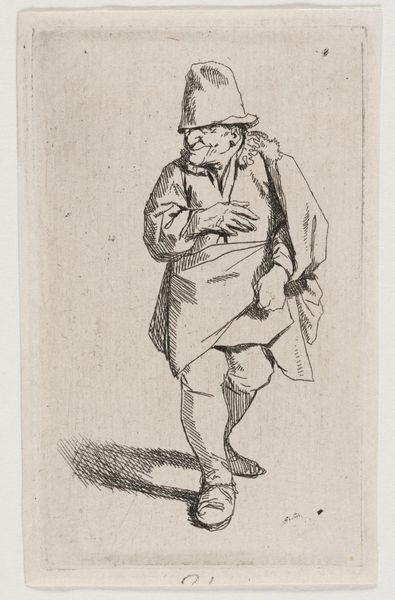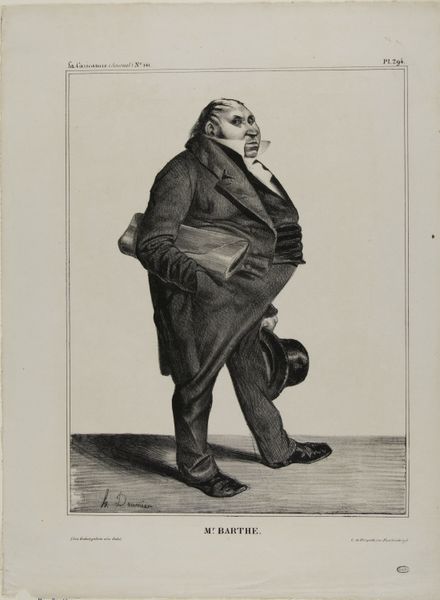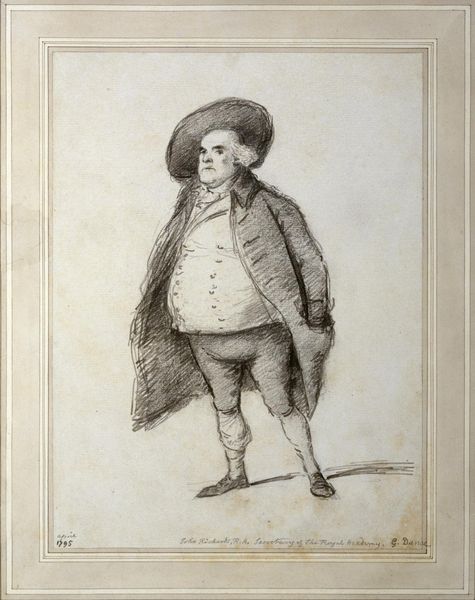
drawing, print, pen, engraving
#
portrait
#
drawing
# print
#
figuration
#
pen
#
engraving
Dimensions: 57 mm (height) x 39 mm (width) (plademaal)
Editor: Here we have a pen engraving and print called "Major, Baron Pechlin," made between 1829 and 1899 by H.P. Hansen. There’s a satirical quality to the figure depicted, but also a clear statement about power and status in its composition. What social dynamics do you see at play? Curator: This work definitely places itself within the context of social commentary and class critique. Consider the subject's prominent belly, contrasted with his expensive attire. Hansen seems to be probing the privileges and excesses associated with the aristocracy, right? Do you feel a sense of empathy or ridicule directed towards the Baron? Editor: I lean towards ridicule. The exaggerated features and pose give it a caricatured feel, almost mocking his authority. I wonder if the artist intended to challenge the traditional, idealized portraits of the elite. Curator: Precisely. Hansen subverts those traditional representations. The Baron’s body language, his hands casually stuffed in his pockets, it all conveys a sort of detached arrogance. This subversion of the dignified portrait serves as a powerful indictment of a social order based on inherited power. Does this piece suggest a broader questioning of social norms during the time it was made? Editor: It seems like it does. It hints at a burgeoning critique of the elite, aligning perhaps with calls for social reform, even revolution that ran throughout Europe during the period it was made. Curator: Absolutely. By stripping away the glorification typically afforded to the upper class, Hansen invites us to reflect on the disparities and inequalities inherent in the social structures of the 19th century. He really urges us to be active viewers and thinkers. Editor: I see how looking beyond the surface representation opens up the conversation about social and political power. Curator: It really reveals how art can be a powerful tool to reflect on the cultural biases that existed when a piece was made and consider the historical legacies which might carry them to our day.
Comments
No comments
Be the first to comment and join the conversation on the ultimate creative platform.

